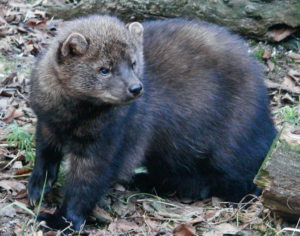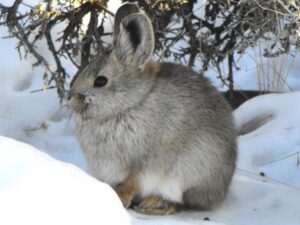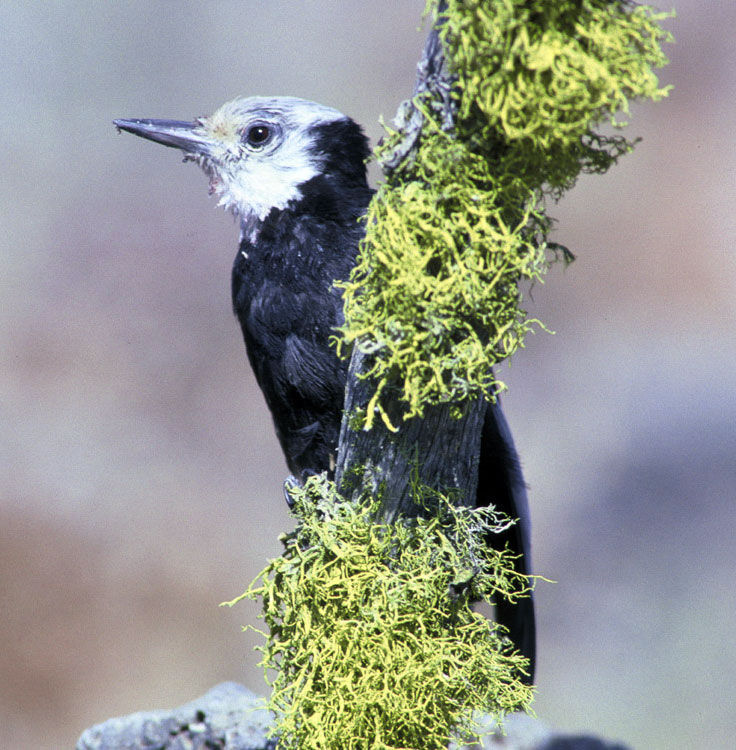As we celebrate 50 years of the Sawtooth National Recreation Area, here’s a showcase on some of the unique species that can be found there and that are facing threats.
Because of a variety of habitat constraints and other climate-induced landscape effects, these animals now find themselves designated within a “Species of Greatest Conservation Need” (SGCN) classification based on Idaho’s State Wildlife Action Plan (SWAP). These species represent a growing number of plants and animals statewide that may be in better shape than those listed as threatened or endangered, but are still experiencing declines in the size and range of their populations.

Fisher
The fisher occupies dense stands of preferably mature conifers and can descend these trees headfirst, like a squirrel. Similar to their cousin, the wolverine, they’re known for their solitary nature except during the mating season and are “crepuscular” in nature, meaning they’re most active during twilight hours around sunset and dawn. Fishers tend to be predatory in nature but also are opportunistic, with a keen sense of smell that could result in a timely winterkill discovery. They have been identified as one of the few animals able to prey successfully on porcupines and even Canadian lynx. National conservation efforts have included population reintroductions into places like the Catskill Range in New York, and other research activities have even centered around the use of captive individuals being trained to run on a treadmill to model their energetic requirements.

Pygmy Rabbit
First discovered in Idaho’s Pahsimeroi River country in 1890, the pygmy rabbit once occupied over 100 million acres across the West. Current estimates suggest that available range has been reduced by 90-95%, due to habitat fragmentation. In the SNRA, the pygmy rabbit relies heavily on the sagebrush steppe country in the lowlands on the flanks and valleys of the Sawtooths. They’re known as “habitat specialists,” meaning they need just the right combination of shrub type and density, as well as adequate forb cover in order to persist over time. Often, individual sagebrush plants in these preferred areas measure over 6 feet in height. Once these very particular habitat requirements cease to be met, their populations can decline quickly, as they prefer not to cross open country. They’re the smallest of all rabbit species — adults barely weigh a pound and measure only about 10 inches.

White-headed Woodpecker
The white-headed woodpecker is one of the 140+ bird species that use habitats like the SNRA in Idaho’s central Rockies. They’re also distributed through small sections of central CA, OR, and WA. Preferring pine forests and eating seeds from these trees, these non-migratory woodpeckers focus on large diameter pines for foraging and open-canopied forests for nesting. Both parents incubate eggs and feed their young during nesting cycles. Impacts of climate change, such as increased wildfires, excessive springtime heat, and widespread bark beetle infestations, threaten white-headed woodpecker populations in the SNRA, and across their range.

Big-eared Bat
Ubiquitously, bats are valued within the animal kingdom as being effective controllers of mosquitoes, prolific pollinators, and effective seed distributors. The bat family is said to save over $1B in crop damage in the U.S. Big-eared bats occupy both forest and desert/sage habitats within the SNRA. With ears reaching 1.5” in length and a wingspan of 12”, they are among the largest of western bats species. They make use of the caves and cliffs among the SNRA’s geologic “batholith” country, where magma cooled under the earth’s surface and then was exposed by forces of erosion and shifting tectonic plates. Big-eared bats, which can live up to 10-15 years, are most likely to thrive in protected areas with stable temperatures.
About ICL’s Wildlife Program
Recognizing the increasing urgency and national attention surrounding wildlife diversity declines, especially related to habitat and climate issues, ICL will be elevating our engagement in this arena. This new program is directly connected to areas of focus you’re already supporting and will reflect the growing threats to Idaho’s wildlife and its ability to persist in the face of rapid ecological change. To stay updated on Idaho’s wildlife, sign up for our Wildlife Campaign updates.
If you observe unique wildlife in Idaho, please report it online here.
